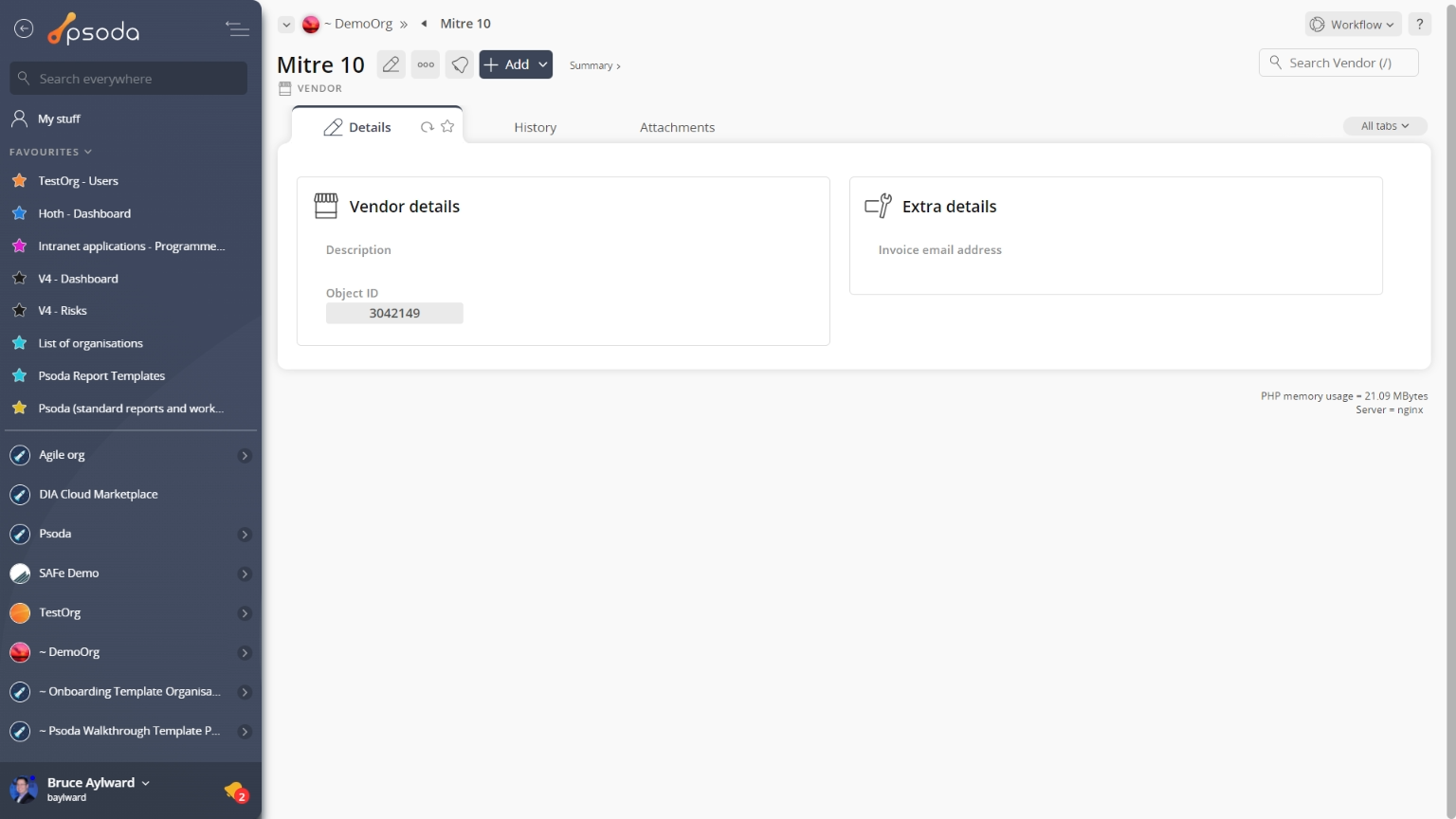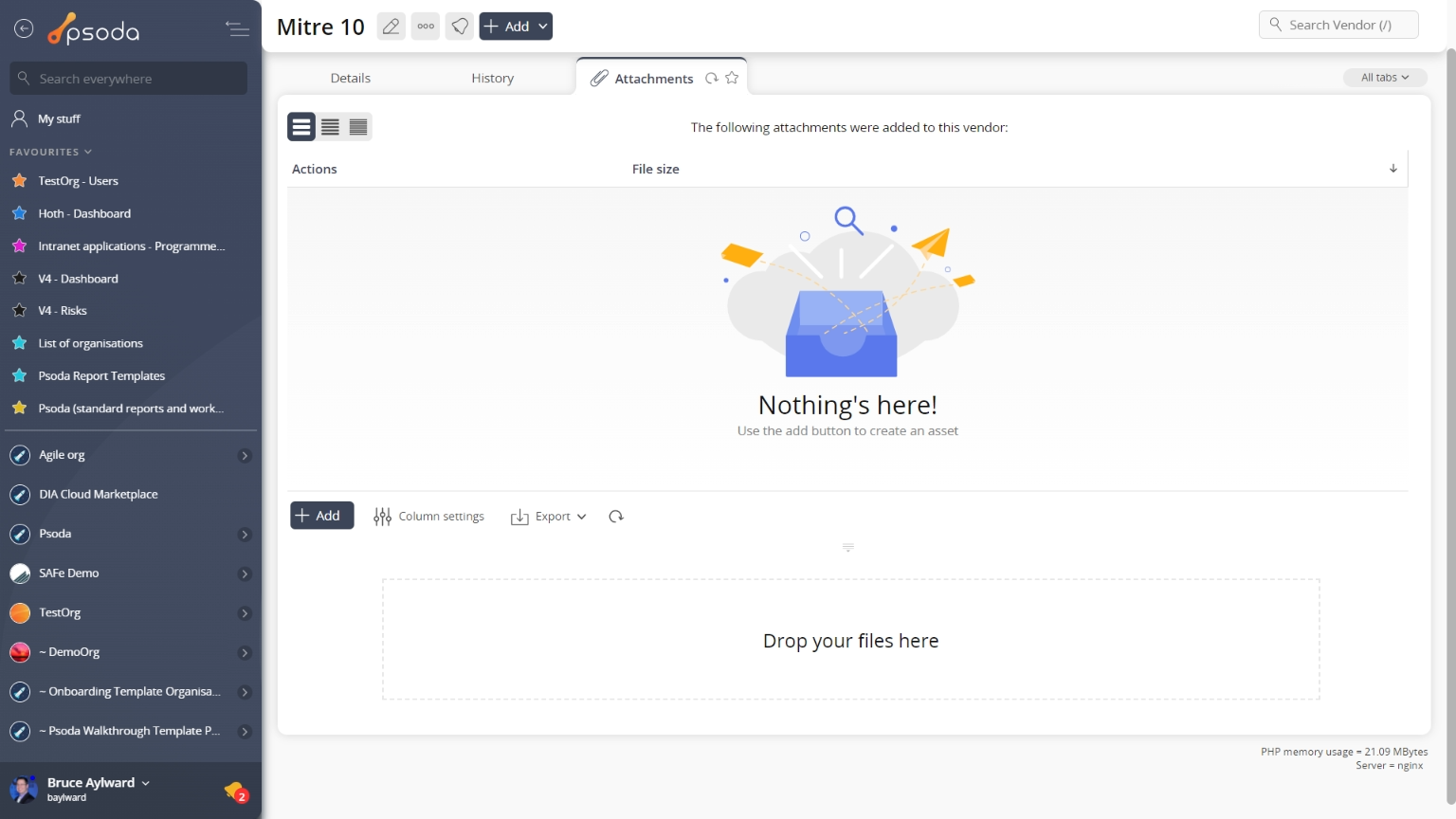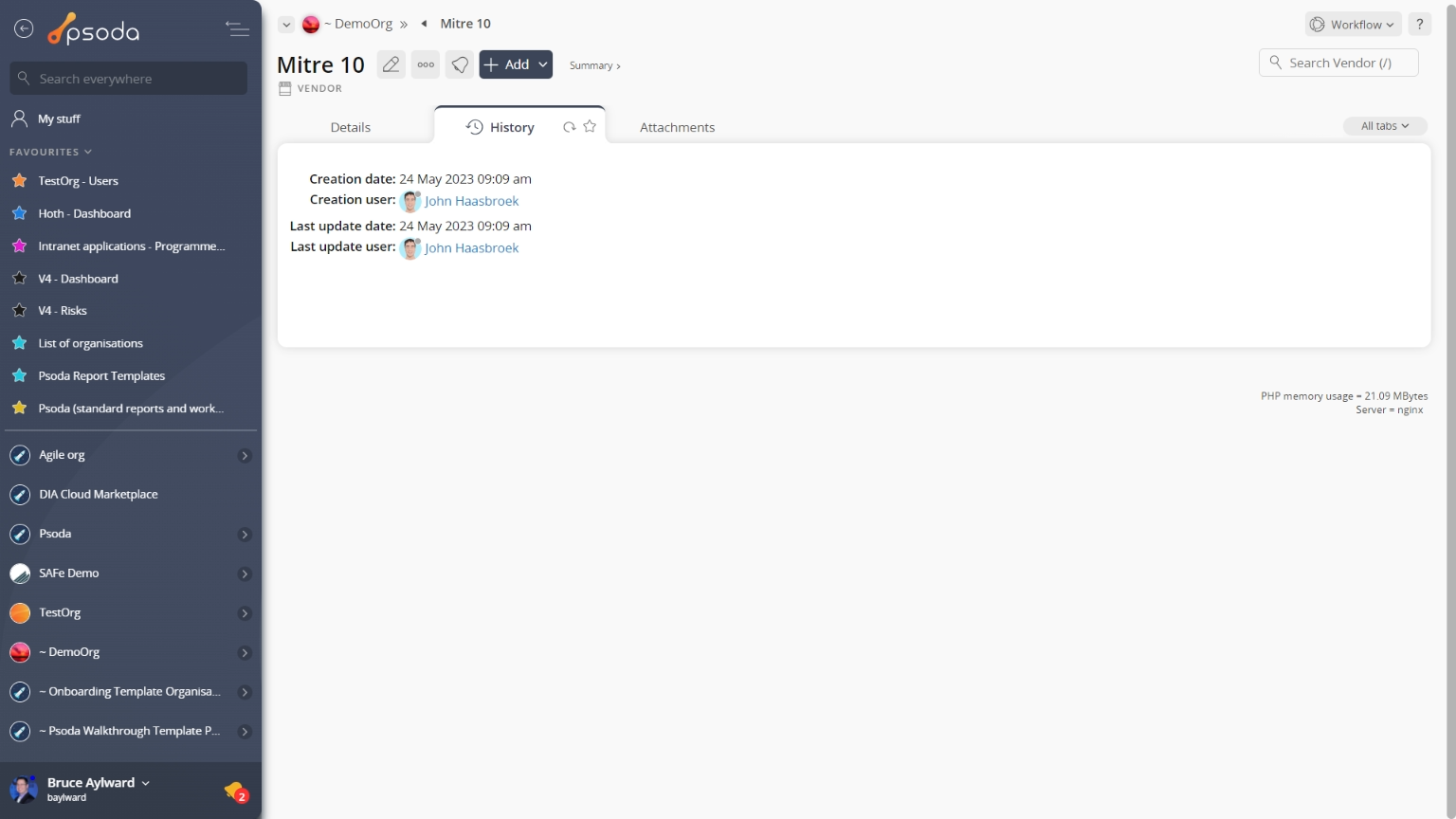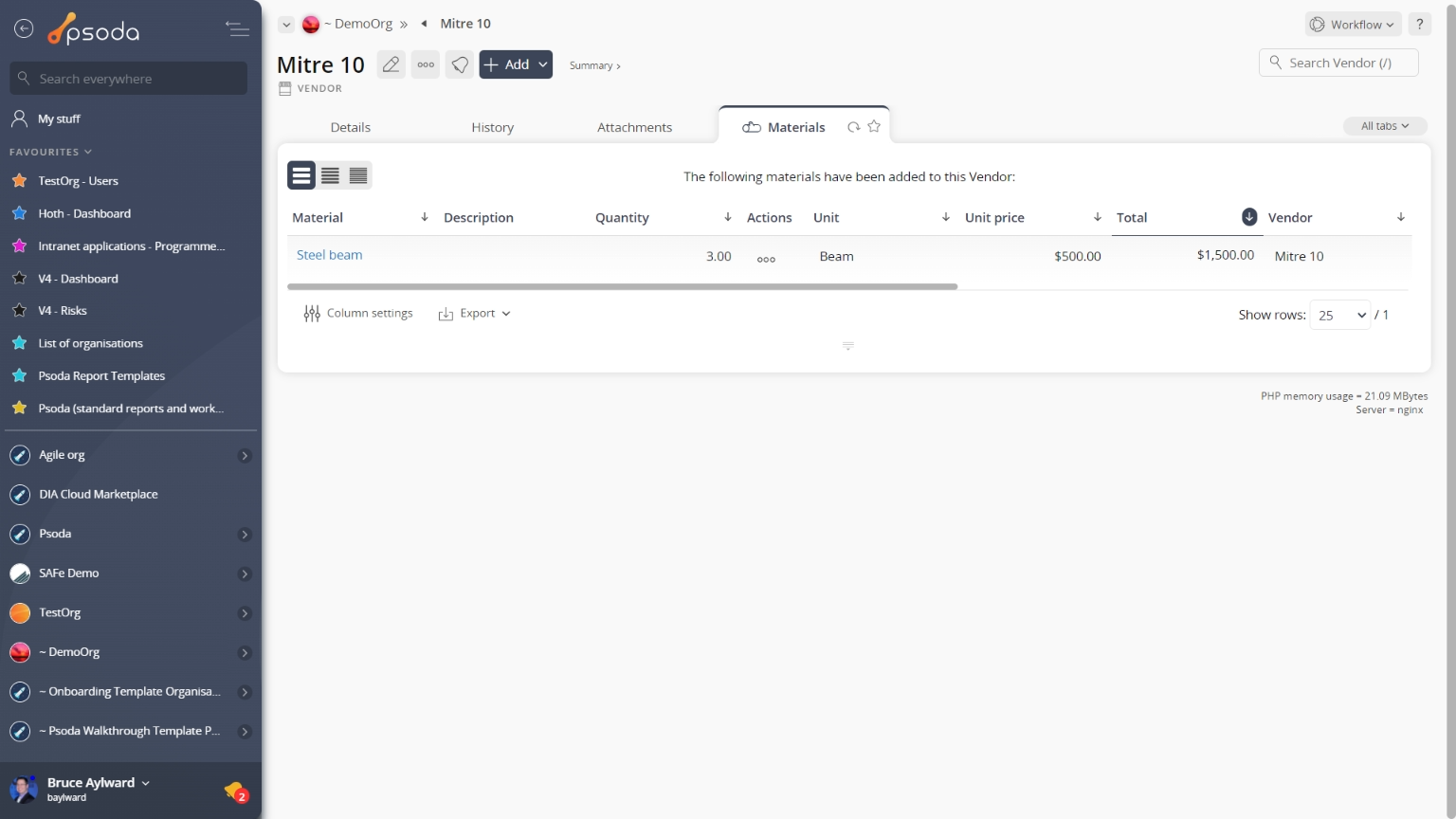
Figure 1 – Vendor view page
The top header area allows you to Attachments
Attachments
This tab shows an asset listing of all of the attachments that have been added to this vendor, as shown in Figure 2. By default, this table will present you with a number of details about the attachments such as the file’s name, attachment type, view the version and access a download link.
From the Actions column of this attachments table, you can act on individual attachments by 
Figure 2 – Vendor attachments tab
Note that you can customise your table view by clicking the Comments
Comments
This tab shows an asset listing of all of the comments that 
Figure 3 – Vendor comments tab
Note that you can customise your table view by clicking the Contracts
Contracts
This tab shows an asset listing of all of the contracts that have been added to this vendor, as shown in Figure 4. By default, this table will present you with a number of details about the contracts such as it’s category, title, description, vendor, start, review and end dates, manager, any attachments or comments and the contract’s current state. If you select the link in the contract column, you will navigate into that contract’s view page.
From the Actions column of this contracts table, you can act on individual contracts by editing,
deleting,
moving the contract or adding
comments or
attachments to the chosen contract .
Figure 4 – Vendor contracts tab
Note that at the bottom of the table you can Details
Details

Figure 5 – Vendor details tab
This tab shows some additional details of the vendor, for example the description of this vendor that can be inline edited, as shown in Figure 5. Expenses
Expenses
This tab an asset listing of all of the expenses logged for this vendor, as shown in Figure 6. By default, this table shows the budget item that this expense item is associated with, the reference, description, date, date of payment as well amount including and excluding tax information. The number of comments and attachments added to an expense item is also indicated in this view.
The Actions column of the expenses table provides accessible functions to act on a chosen expense item. These functions include  Figure 6 – Vendor expenses tab
Figure 6 – Vendor expenses tab
A chart at the bottom of this tabbed view will also visually show you the accumulated expenses from the start of this project.
Note that you can customise your table view by clicking the edit button at the bottom of the expenses table or navigate to this same spot to
add more expense items to this vendor manually, or you can
import multiple expenses from a CSV file. Here, you can also export this list to
Excel or
CSV files.
 History
History
This tab shows shows some basic history of the vendor, as shown in Figure 7. By default, this tab will present you with a number of details about the vendor’s history such as the creation date, creation user, last update date and last update user. If the vendor has been changed then this section will also show a table of all the changes that has been made, including the date of each change, the field changed, the value before the change and the user who made the change.
Figure 7 – Vendor history tab
Note that you can customise your change table view by clicking the edit button at the bottom of the change table. Here, you can also export this list of changes to
Excel or
CSV files.
 Materials
Materials
This tab shows an asset listing of all of the materials needed for this vendor, as shown in Figure 8. By default, this table will present you with a number of details about the materials such as, the description, quantity needed, unit price, total price, the vendor as well as if the material has been ordered or delivered. Materials that are due to be ordered or delivered are flagged in red under the order by and needed by columns. You can sort the table by clicking on the column headings and if you click on the link below the material column you will navigate into the selected material’s view page.
From the Actions column of this materials table, you can act on individual materials by 
Figure 8 – Vendor materials tab
Note that you can customise your table view by clicking the